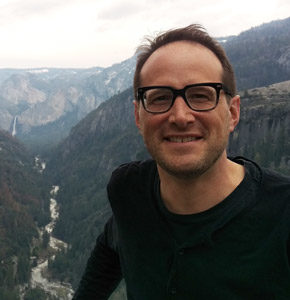The solid yet gelatinous blob felt pleasantly slimy in my hand when she handed it to me. Although we stood waist deep in the Namekagon River just below its headwaters dam, neoprene wetsuits protected us from the surprising cold of late August water in 2015. When we showed the patterned blob to scientist Dr. Toben Lafrancois, he recognized it immediately: bryozoan. It was a colony of tiny invertebrates all clinging to the stem of an aquatic plant.
The firm-jello-with-a-textured-surface feel of the bryozoan triggered my “gross” reflex just as much as my “cool” instinct. I was impressed when the group of teenage girls I was snorkeling with didn’t bat an eye. Showing interest (not too much), but not disgust, they all had a look before we put the colony back into the river.]
 |
| An underwater photo of the bryozoan we found that day. |
I suppose that I shouldn’t have been surprised, because this group had been snorkeling and studying river ecology with Toben and Ian Karl, the Experiential Program Coordinator, all summer, as part of Northwest Passage’s “New Light under the Surface” program. Through a National Park Service Youth Partnership Program grant, these at-risk kids had been armed with waterproof cameras, wetsuits, and snorkel gear, and were trailblazing a new realm experienced by incredibly few, all while developing healthy life habits.
My afternoon with the girls was incredible. I’d never seen that side of the river before, and I enjoyed being the student as they helped me learn to snorkel, use an underwater camera, and follow safety protocols. Memories of that day have stuck with me, with the lumpy mass of the bryozoan rising to the top as a sort of touchstone.
So this fall, when I received several photos of bryozoans with identification requests, memories of that snorkeling experience bubbled up, and I decided it was time to investigate further. Local artist Sarah Balbin kindly led me out to a patch she’d found on the narrows of Picture Lake near Cable, and I collected a small specimen to examine later under the Museum’s new digital microscope.
 |
| Thanks for the guide service on your beautiful lake, Sara! |
With my sleeve rolled up, I plunged my arm into the cool water and tugged on the plant stem bisecting the bryozoan. The dead, decomposing stem released much more easily than I anticipated, and soon I was looking at a pair of mini-football-shaped colonies on the deck of my kayak.
While the blob looked more like a patterned glass art piece than a living being, it is actually formed of hundreds of genetically identical, physiologically interconnected animals called zooids. Each individual zooid is made up of an outer sleeve-like structure, a mass of organs that can move within the sleeve, and the lophophore, which is a ring of tentacles that filters food particles out of the water. Altogether, a zooid may be only 0.5 mm long, so none of this was visible to my unaided eye.
While each zooid is capable of independent feeding, digestion, and reproduction, they share certain fluids and tissues that unify the colony, and it’s impossible to separate them entirely.
Back in the office, I examined the bryozoan under our nifty new microscope. (Thanks for the gift, Dr. Vernier!) The brown and yellow pointillist designs I’d admired in the field resolved into a conglomeration of various-colored polka-dots, often with concentric rings. Nothing looked remotely like the feeding tentacles I’d read about. I snapped some photos through the scope and sent them off to Dr. Lafrancois for clarification.
 |
| Statoblasts in various stages of development. |
 |
| Statoblasts that have become floatoblasts and are ready to float away! |
“They are statoblasts,” he wrote back, “or dormant buds getting ready for winter.” While bryozoans can reproduce sexually, they also produce these statoblasts, which are sort of like tiny “survival pods” that develop while attached to zooids. Inside each bivalve-like chitin shell hides a proto-zooid with some stored food.
The statoblasts of some species contain a gas bubble that will float them up to the surface. Others drift on a current or just sink to the bottom. Apparently, the various shades of brown and yellow represent various stages of statoblast development, and their prevalence is a result of the bryozoan’s autumnal push to create clones who can survive the winter.
The bryozoan colony will die as temperatures drop, but statoblasts are incredibly durable and can survive long periods of dormancy, freezing, dehydration, and even transport in the gut of a duck or the ballast of a ship. In the spring, the proto-zooid will grow, bud off more zooids like itself, and form a new colony. By fall, colonies have reached their largest size, and people notice them more frequently…prompting them to send photos to me, and me to finally write about this incredible creature.
As I scooped the bryozoan off the microscope stage and back into its plastic bag, the texture of it in my hand brought back memories of snorkeling with those girls in Namekagon River. We were all waist deep in discovery on a sunny August afternoon.
You can read Northwest Passage’s blog about that day here:
Special Note: Emily’s book, Natural Connections: Exploring Northwoods Nature through Science and Your Senses is here! Order your copy at http://cablemuseum.org/natural-connections-book/. Listen to the podcast at www.cablemusum.org!
For 50 years, the Cable Natural History Museum has served to connect you to the Northwoods. Come visit us in Cable, WI! Our new exhibit: "Better Together--Celebrating a Natural Community" is now open!


















